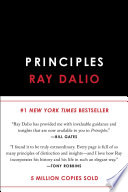
From "Principles"
Anticipating and Navigating the 2008 Financial Crisis
Key Economic Insight
The firm developed timeless and universal economic and market principles, complemented by a 'depression gauge' integrated into its systems by the early 2000s, designed to identify specific conditions indicating a heightened risk of debt crisis and depression. In 2007, this gauge signaled that a debt bubble was nearing its breaking point, with debt service costs outpacing cash flows, and critically, interest rates near 0 percent meant central banks lacked the traditional monetary policy tools for recovery, a configuration mirroring historical depressions. This foresight was informed by prior experiences, including a misjudged 1982 debt bust, and extensive research into numerous past financial crises.
Comprehensive historical analysis, including day-by-day comparisons with events like the Great Depression, reinforced the firm's grave concerns about impending widespread debt problems. Despite seeking out others to challenge their views, most policymakers initially dismissed the warnings as 'far-fetched,' with the notable exception of Ramsen Betfarhad from the White House, who diligently reviewed their calculations. In response, client portfolios were strategically prepared with balanced positions to offer significant upside if correct and limited downside if wrong, reflecting a dual concern about both the accuracy of their prediction and the potential for widespread unprotected losses.
As conditions deteriorated, policymakers began to heed their insights, with high-level meetings including Tim Geithner, President of the New York Fed, who visibly reacted to the firm's data. The collapse of Bear Stearns and, six months later, Lehman Brothers, confirmed the firm's predictions, triggering a systemic crisis. However, policymakers, particularly Fed Chairman Ben Bernanke, implemented 'a beautiful deleveraging,' successfully lowering debt burdens while maintaining economic growth and low inflation. This allowed the firm's flagship fund to achieve over 14 percent returns in 2008, contrasting sharply with widespread losses exceeding 30 percent, validating their principle-driven approach and the importance of balanced risk-taking over aggressive, unhedged bets.
📚 Continue Your Economic Learning Journey
Access the complete Principles summary with audio narration, key takeaways, and actionable insights from Ray Dalio.